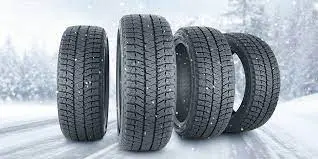You’ll probably pay a minimum of $500 for a set of four new snow tires, and a maximum of $800. Of course, this amount can vary depending on your location and the type of car you own.
It’s also important to consider that it might cost between $50 and $100 in labor to get all four tires swapped out by a mechanic. If you’re the sort who prefers to handle tire changes yourself, then be sure you have the right equipment on hand so that you don’t damage them or end up injuring yourself while installing them.
One thing is certain: Since snow tires can’t be used year-round, they’re likely worth buying only if you live in an area where winter weather is intense and lasts longer than three months.
You should always re-install when temperatures are consistently above 45 degrees Fahrenheit.
In addition to having the right tires at the right time, it’s also important to know when to change them. You should always re-install your summer and all-season tires when temperatures are consistently above 45 degrees Fahrenheit.
This is because seasonal tires are made from a type of rubber that becomes brittle and hard in colder temperatures. It can become so brittle that it actually cracks in extreme cases! Your summer or all-season tires will last longer if you don’t drive on them until the weather is warmer.
In contrast, your winter tires should be removed only when temperatures are consistently above 45 degrees Fahrenheit. Winter tire rubber is designed to stay flexible in cold weather and provide extra traction in snow and ice, but they’ll wear out faster than other types of tires if you use them year-round.
Always make sure your snow tires are properly inflated and in good condition,
When the roads turn snowy and icy, drivers should check their tires to make sure they’re inflated and in good condition. When you use snow tires, they should be at the proper inflation levels recommended by the vehicle manufacturer, not that of a summer tire or all-season tire.
In addition to checking air pressure, it’s also important to check for damage or water trapped inside the tire. If any is found, replace your snow tire right away.
If you are using all-season or summer tires instead of snow tires, take them off your vehicle during winter and store them somewhere safe. This can save you money because it will prevent unnecessary wear on your tires and extend their lives until spring arrives again.
You have options when it comes to snow tire patterns.
You’re also going to want to consider the tread pattern of your snow tires. Tire manufacturers have designed a variety of patterns with different pros and cons depending on the winter conditions you are driving in. For example, some are more aggressive than others (more grip!) but offer less stability, while some may be better for slippery roads but not as good in deep snow. And don’t forget about studs! Your local tire shop will be able to help you choose the best tread pattern for where you live and how you drive.
Having the right set of snow tires for your vehicle can give you more confidence on the road.
In order to understand the cost of snow tires, one should first know what makes them different from all-season tires. Unlike most other tires, snow tires are designed specifically for use in cold weather. The rubber compound in snow tires is formulated to perform best at temperatures below 45°F. Also, snow tires have deeper treads and more sipes than all-season tires.
Sipes are thin slits cut into the tread of a tire that allow the tread blocks to flex and give additional grip when braking and turning on slick road surfaces. These features allow them to have better traction in cold and snowy conditions. So, if you live in a region that experiences long stretches of wintry weather, then having the right set of snow tires for your vehicle can give you more confidence on the road.


